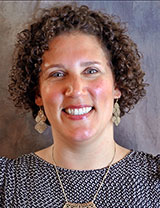 By Concetta Dwyer
By Concetta Dwyer
Each medical encounter is comprised of two major parts: direct patient care, and documentation. Direct patient care involves actions and interactions traditionally associated with health care; documentation involves recording pertinent information gleaned during direct patient care. Physicians can find it difficult to balance gathering data with recording it. Medical scribes obviate the need for this tenuous balance by taking over the duties of documentation.
Before working with health care providers, medical scribes undergo rigorous company training, where they are trained in medical terminology, billing and coding elements, and the use of the electronic medical record system. During direct patient care, scribes document exam findings, the patient's full medical history, and any assessments a health care provider makes. After each visit, scribes can pend orders signed by the health care provider, and print out instructions for patients.
Scribes improve not only the efficiency of medical teams, but also patient satisfaction. By assuming the impersonal task of recording, they allow health care providers to communicate with their patients face-to-face, building trust and rapport. This provider-patient connection leads both to patient satisfaction and better health outcomes.
On the use of medical scribes, Alberto Rodriguez, MD, states: "The best parts of using scribes is it allows me to give my undivided attention to the patients, I stay more on time through the day, and my charts are more complete." Medical scribes are crucial components of medical teams as they strive to meet the quadruple aim of improving population health, patient experience, provider satisfaction, and reducing costs.
To leave a response to this post, please email Ellen Ravens-Seger.
 By Concetta Dwyer
By Concetta Dwyer By Kimberly Tschetter, PA-C
By Kimberly Tschetter, PA-C